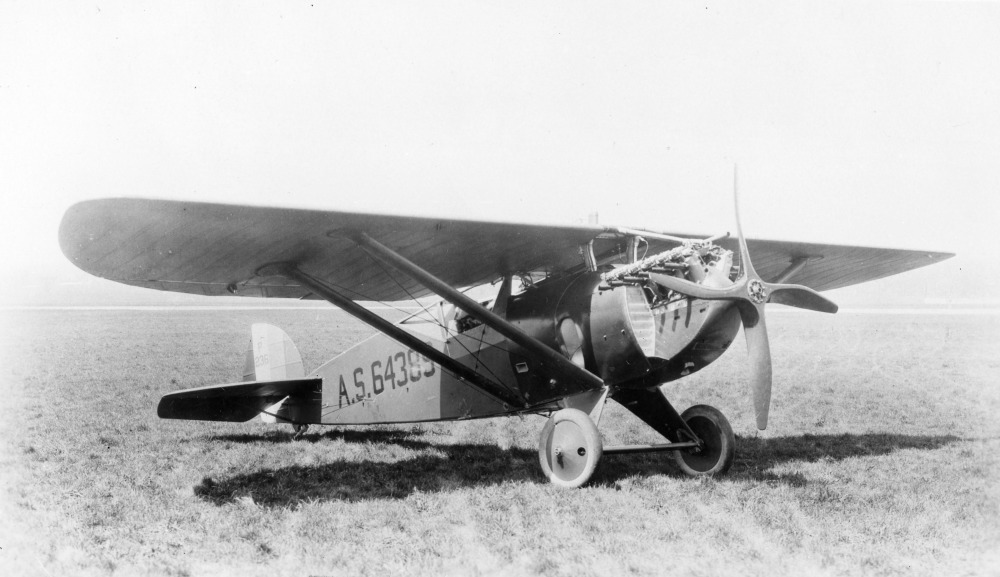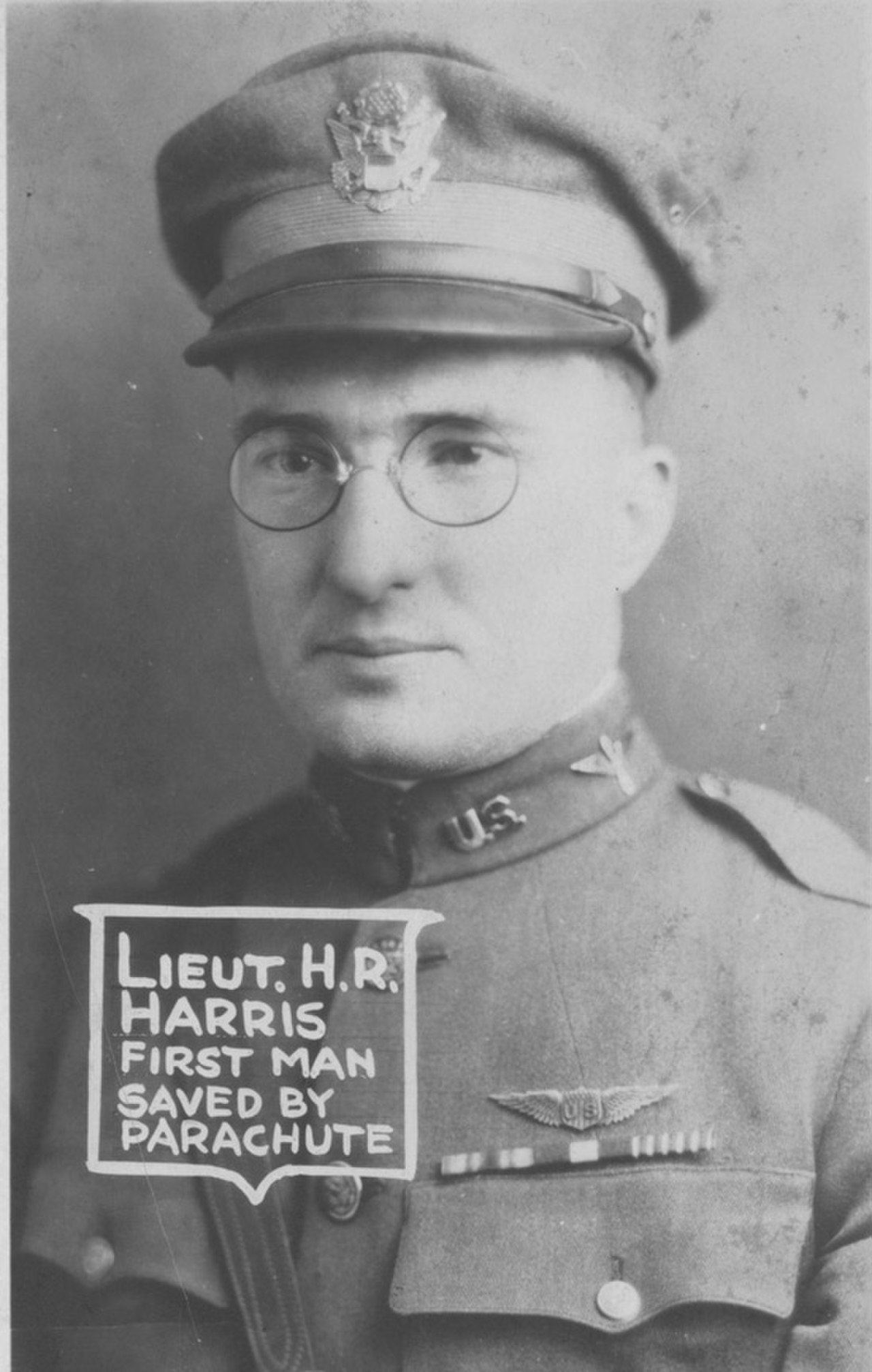100 years ago, the parachute began to save lives
On October 20, 1922, a Type A parachute saved U.S. Army Air Service test pilot Lt. Harold Harris from certain death when the Loening PW-2A he was flying lost control and plunged to earth during an air combat drill.
This gripping anecdote was published by Kevin Rusnak of the U.S. Air Force Life Cycle Management Center (AFLCMC) History Office.
This was the first of many stories with a happy ending, thanks to parachutes
Lt Jimmy Doolittle looked to the cool, fair skies over the city of Dayton, just across the river from where he stood on the periphery of McCook Field, home to the Air Service’s Engineering Division and its cadre of expert test pilots. His keen eyes tracked a pair of airplanes flown by his comrades more than 2,000 feet overhead, heading southeast over downtown.
The buzzing of identical V-8 engines in the Loening PW-2A monoplane and more conventional Thomas-Morse MB-3A biplane was still audible. They maneuvered into a formation familiar to Doolittle and all the McCook pilots: one on the other’s tail for a little mock air-to-air combat, with the MB-3A flown by future USAF Vice Chief of Staff Lt Muir Fairchild in the lead.

Engaged, Fairchild banked to the left, heading north-east over the neighborhoods to the east of McCook Field. As fellow test pilot Lt. Harold Harris turned his Loening to follow, something went wrong. Doolittle frowned as he saw bits flutter away from the monoplane. Next to him, McCook Field commander Maj Thurman Bane, who had also noticed, began wringing his hands and repeating, “Oh my God….”
Up in the Loening’s cockpit, all hell was breaking loose. Harris felt his plane shudder violent-ly side to side. The control stick slammed repeatedly from left to right against his thighs. As one of McCook’s most experienced test pilots, Harris immediately suspected the trouble. His PW-2A was recently outfitted with experimental balanced ailerons, the moveable parts on the wings’ trailing edges that control the aircraft’s roll. The slipstream air was causing those to flap rapidly up and down, each side in opposite directions—a phenomenon now known as flutter. The stick pounded against Harris’ hand as he futilely struggled to regain control.
As Harris moved to close the throttle and pull back on the stick in an effort to slow the plane, he saw to his horror, as Doolittle and Bane did below, sections of his wing coverings ripping away. The roll oscillations had wrecked the wings’ internal wooden structure, leaving the collapse of one or both of them inevitable. More than a few of his predecessors had found that it was all but impossible to save an airplane or your own life with that sort of structural failure. In fact, just seven months earlier, Maj Bane’s assistant Lt Frederick Niedermeyer was killed nearby under eerily similar circumstances: practicing dogfighting in a monoplane when the wing collapsed. But in dying, he had just saved Harris’ life.

On March 13, 1922, Niedermeyer had just finished a flight and stripped off his gear when John Macready invited him back up for some combat practice. “Niedie” chose a Fokker V.40, an updated World War I-era monoplane like the PW-2A, but with a reputation for poor build quality. Its unusually small cockpit made wearing a backpack-type parachute impossible and a seat-pack type chute uncomfortable because it lifted the pilot’s head above the front windscreen.
Such excuses were typical; US pilots were not yet habitually wearing parachutes, first because none were available during WWI, but now because they trusted their own skills more than this new lifesaving technology and they considered either type of pack a nuisance during routine flying. For their part, aircraft manufacturers had not yet modified seats or cockpits to easily accommodate either type of parachute.
Whatever his reasons, Lt Niedermeyer went up without a parachute and paid for it with his life. The accident report suggested he could’ve escaped had he had one, which spurred McCook commander Maj Bane to issue an edict on March 29th that all pilots flying from his field must wear a parachute on every flight. After all, McCook’s Parachute Branch developed the first practical American parachutes for aircraft and the world’s first free-fall, ripcord-operated parachute—the standard Army Air Service “Type A”.

Thanks to Niedermeyer and Bane, Harold Harris was sitting on his Type A parachute as his plane shook apart around him. While more than a few of the McCook pilots had tried parachuting, Harris had not. He had, however, piloted for dozens of other jumpers, so he had some idea what to expect.
With his plane in a shallow, but shaky, descent, Lt Harris unbuckled his safety belt and stood up. The 250mph wind blast instantly blew him clear of the airplane and sent him into a tumbling freefall. Witnesses on the ground watched the plane’s wings rip free just as Harris jumped. He recalled not being fearful, even though he was upside down, spinning headfirst toward a residential neighborhood. He reached down to his left and pulled at the ripcord’s D-ring near his hip that would release his parachute from its pack. Nothing happened. He yanked again. Nothing. A third time yielded still no parachute as the ground rushed up at him. In a moment of clarity, he realized he had been tugging on the metal ring for his leg strap. He quickly located the correct ring and pulled.
Below, Bane and Doolittle watched with relief as they saw the beautiful white silk “blossom out” above Harris’ head and slow his fall. He disappeared from sight beyond the houses, as a rising pillar of smoke marked his airplane’s crash somewhere nearby.
William Clingman and his 6-year-old son Thomas were oblivious to the action in the skies above them as they went in through the backdoor of their home. Suddenly a tire crashed through the window, narrowly missing young Tom. A tremendous screech was followed by what felt like an earthquake as Harris’ plane scraped the side of their house, hit their fence, and came to rest in a pile of twisted wood and metal in the neighbor’s yard at 409 Valley Street. Oil and gas splattered everywhere, but luckily did not ignite. Upon seeing the crash and not seeing her husband or son, Mrs. Clingman promptly fainted. Other bits and pieces of the plane landed nearby—one wing at a gas station, the other in the Webster School yard. Amazingly no one was hurt, nor was much damaged on the ground.

Meanwhile, Harris looked up at his life-saving canopy, casually wondering how it had stayed so clean amidst the dirty, oily McCook Field, then glanced down at the houses beneath him. He didn’t have far to fall because he had dropped precipitously to just 500 feet before he managed to open his chute. To his relief he was head-ed toward a backyard grape arbor, with a spindly wooden latticework that could break his fall.
A few blocks away from the crash site, Mr. PB Best watched the aerial events unfolding as Harris slowly drifted into the backyard grape arbor of the house at 337 Troy St where Best was rooming. When the airman crashed through the trellises onto the brick pavement beneath, Best rushed over, asking if he was all right.
Three thoughts rushed through Harris’ head. First, he wasn’t dead, or even seriously hurt. Second, he hoped his plane hadn’t killed anyone when it hit the ground. And lastly, he had just torn his best pair of pants. On a 1922 Army lieutenant’s salary, that was no idle joke.
Harris reassured Best that “I’m not hurt. Just a bit excited.” Fire trucks rushed to the plane, while an ambulance came to his aid, though neither was needed.
On that October 20, 1922, Lt Harold R. Harris became the first person to be saved from an airplane crash using a manually operated (ripcord), freefall parachute. He is also believed to be the first American pilot to successfully escape an impending crash us-ing any kind of parachute. A few weeks later, Lt Frank Tyndall (namesake of Tyndall AFB) became the second per-son saved by a chute. Their experiences led Army Air Service Chief Gen Mason Patrick to make parachutes mandatory for all his flyers in January 1923.

/https://aviacionlinecdn.eleco.com.ar/media/2022/10/100-anos-paracaidas.jpeg)
Para comentar, debés estar registradoPor favor, iniciá sesión